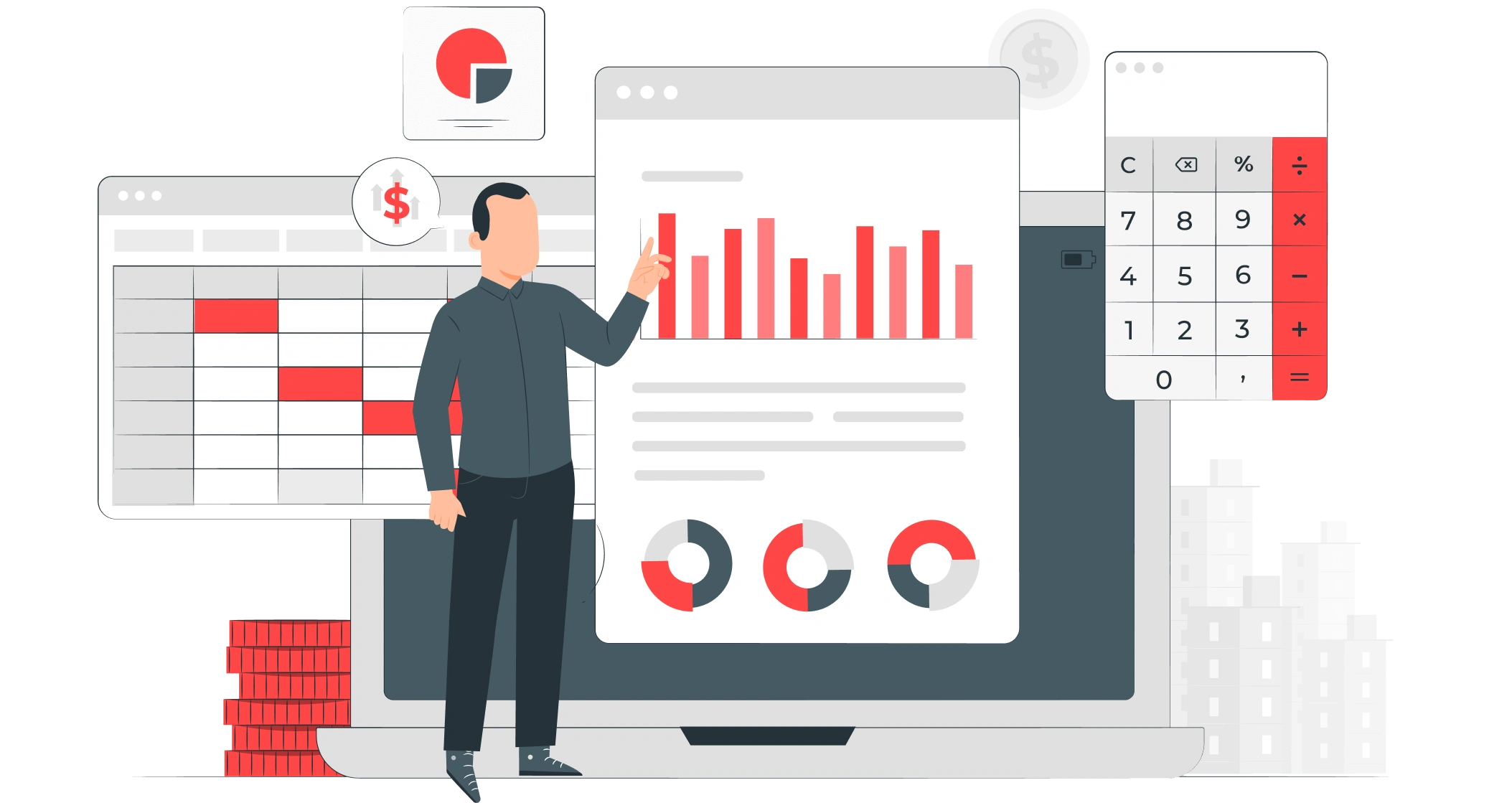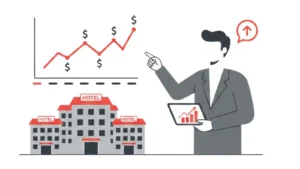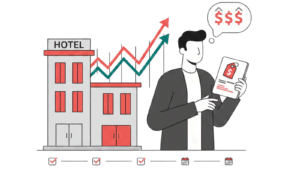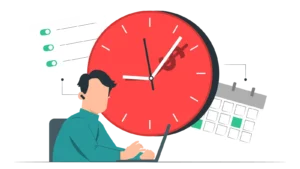Updated : Aug 7, 2025
Managing multi-unit inventory in aparthotels and extended-stay properties presents unique challenges that demand innovative strategies. As these properties cater to long-term guests, maintaining an efficient network inventory management system becomes essential for optimizing occupancy and revenue. According to a report by Grand View Research, the global extended stay hotel market size was valued at USD 53.24 billion in 2023 and is projected to reach USD 98.80 billion by 2030, highlighting the growing importance of effective inventory management. By implementing robust strategies, hotel owners and managers can streamline operations, reduce costs, and enhance guest satisfaction.
Key Elements of Extended-Stay Properties and Aparthotels
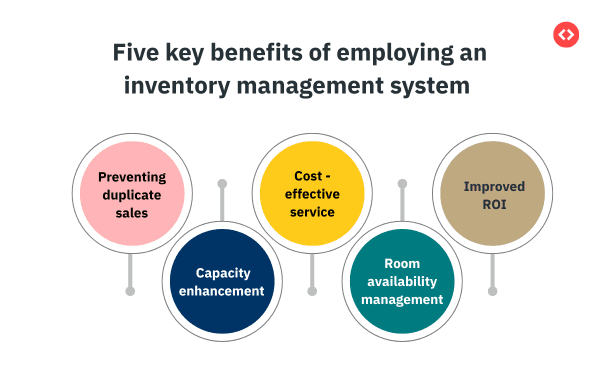
When managing multi-unit inventory for extended-stay properties and aparthotels, understanding the core elements that define these accommodations is crucial. Let’s dive into what sets them apart and why they are a hit among travelers seeking long-term stays.
1. Space and Comfort
Unlike traditional hotel rooms, extended-stay properties and aparthotels offer larger living areas, often equipped with separate sleeping, dining, and working spaces. This added space provides guests with a comfortable environment that resembles home, making their extended stay pleasant and productive.
2. In-Room Amenities
These properties come fully loaded with amenities such as kitchenettes or full kitchens, allowing guests to cook their meals and maintain their routine. Laundry facilities, high-speed internet, and workstations are also standard, catering to both leisure and business travelers who need to balance work and relaxation.
3. Home-Like Atmosphere
By offering a balance between the comforts of home and the services of a hotel, aparthotels create a unique atmosphere that encourages extended stays. Personalized services like housekeeping, concierge services, and fitness centers add to the appeal, making guests feel valued and well-cared-for during their visit.
4. Flexible Rates
Extended-stay properties often provide tiered pricing structures that reward longer stays with lower nightly rates. This not only appeals to budget-conscious travelers but also ensures consistent occupancy rates for property managers.
PriceLabs helps apart hotels and serviced apartments optimize pricing with data-driven automation, ensuring you’re never underpriced or leaving money on the table.
- Last-Minute & Far-Out Pricing Adjustments – Optimize rates for last-minute and far-out bookings.
- Min-Stay Recommendations & Length-of-Stay Rules – Automatically adjust minimum stay requirements to maximize occupancy.
- Custom Seasonal Adjustments – Set season-based pricing variations tailored to demand fluctuations.
- Date Specific Overrides – Fine-tune pricing with manual controls when needed.
Unique Features of Multi-Unit Properties Requiring Special Attention
1. Diverse Inventory Needs
Multi-unit properties like aparthotels and extended-stay accommodations cater to a wide range of guests with varying needs. Unlike traditional hotels, these properties often feature units with kitchens, living areas, and other home-like amenities. As a result, the inventory list extends beyond standard toiletries and linens to include kitchenware, small appliances, and more. Managing such a diverse inventory requires a strategic approach to ensure all items are readily available and in good condition.
2. Extended Occupancy Cycles
Guests at extended-stay properties typically book longer stays, leading to longer occupancy cycles compared to standard hotels. This shift necessitates careful monitoring of inventory turnover and usage rates. Owners and managers must develop systems for tracking wear and tear on items like linens and kitchen equipment to ensure timely replacements, maintaining quality for long-term guests.
3. Variable Demand Patterns
Multi-unit properties experience fluctuations in demand based on seasonal trends, local events, and market conditions. This variability can complicate inventory management, as it requires flexible stock levels that can adjust to sudden changes in occupancy. Implementing dynamic inventory strategies that incorporate data analytics can help predict demand patterns accurately, ensuring optimal stock levels without over- or under-supply.
4. Space Management Challenges
With each unit functioning as a mini-home, storage space is often limited within individual units. This constraint necessitates efficient space management solutions to store extra inventory without cluttering guest areas. Utilizing centralized storage and implementing smart organizational systems can optimize space usage while ensuring quick access to necessary items.
5. Guest Personalization Expectations
In today’s hospitality landscape, personalization is key to enhancing guest experiences. Multi-unit properties should anticipate diverse guest preferences by maintaining an adaptable inventory that allows for personalized touches—such as providing different pillow types or additional kitchen gadgets upon request. A flexible approach to inventory management not only meets guest expectations but also elevates the overall stay experience.
Strategies to Manage Multi-Unit Inventory of Aparthotels
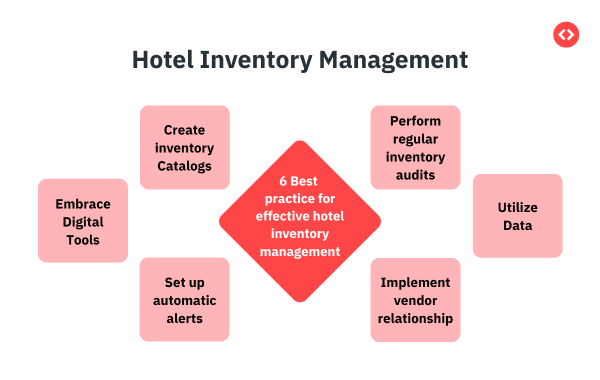
1. Implement a Centralized Management System
Using a centralized system is crucial for effectively managing multiple units. It allows you to track occupancy, monitor inventory levels, and streamline operations across all properties. By providing real-time data, it ensures that you can make informed decisions quickly, enhancing both operational efficiency and guest satisfaction.
2. Optimize Pricing Strategies
Dynamic pricing can significantly impact your revenue. Use data analytics to understand market trends and adjust your rates accordingly. This strategy helps maximize occupancy during low-demand periods while capitalizing on peak seasons by setting competitive prices.
3. Regular Inventory Audits
Conducting regular audits prevents discrepancies and ensures that all units are adequately stocked. This practice not only reduces waste but also helps in identifying patterns or issues that might require attention, such as frequently missing items or damage.
4. Leverage Technology for Inventory Tracking
Utilize advanced software solutions to automate inventory tracking. These tools provide insights into usage patterns and forecast future needs, helping you maintain optimal stock levels without overstocking or understocking.
5. Establish Clear Communication Channels
Effective communication between departments is essential for seamless inventory management. Set up clear channels for reporting needs, issues, and updates to ensure that everyone is on the same page and can respond promptly to any situation.
6. Train Staff on Best Practices
Ensure your team is well-versed in inventory management protocols. Regular training sessions can improve accuracy in tracking and handling inventory, leading to more efficient operations and a better guest experience.
7. Foster Vendor Relationships
Building strong relationships with suppliers can lead to better pricing, priority service, and more flexible terms. Reliable vendors are integral to maintaining steady inventory levels, especially during high-demand periods or supply chain disruptions.
Transform your hospitality approach today
Discover actionable strategies tailored for small hotel owners and managers creating unforgettable stays for your guests & expanding revenues for your hotel!
Start your 30-day FREE trial now!Technology’s Support in Managing Multi-Unit Inventory in Aparthotels
1. Property Management Systems (PMS)
A robust PMS consolidates all inventory data into a centralized platform, allowing hotel managers to monitor room availability, track occupancy rates, and manage bookings seamlessly. By automating these processes, PMS reduces manual errors and frees up time for more strategic decision-making.
2. Revenue Management Systems (RMS)
RMS tools analyze market trends, competitor rates, and historical data to recommend optimal pricing strategies. By dynamically adjusting prices based on demand predictions, aparthotels can maximize revenue while ensuring high occupancy rates.
3. Channel Managers
Channel Managers integrate directly with your PMS to update availability and pricing across multiple online booking platforms in real-time. This ensures that your inventory is accurately represented everywhere it’s listed, reducing the risk of overbooking and improving guest satisfaction.
4. Inventory Management Software
Specifically designed for multi-unit properties, inventory management software provides real-time insights into maintenance needs, housekeeping schedules, and supply levels. It helps streamline operations by ensuring each unit is prepared and ready for guests at all times.
5. Data Analytics
Data analytics tools provide valuable insights into guest preferences, booking patterns, and operational efficiency. By harnessing this data, hotel managers can make informed decisions to improve service offerings and optimize inventory management strategies.
PriceLabs Advantage

Running an apartment hotel means wearing many hats—guest experience, marketing, operations, and pricing. In this context, PriceLabs helps independent hotels like yours optimize pricing with data-driven automation. With easy setup, seamless PMS integration, and full pricing control, you get more revenue with less effort.
- Hotels using dynamic pricing see up to 18% higher RevPAR in their first year.
- Smart automation adjusts prices daily based on demand and competition.
- Stay ahead of the market with real-time competitor insights.
Way Forward
Managing multi-unit inventory for aparthotels and extended-stay properties demands a strategic approach that balances efficiency with guest satisfaction. By implementing robust inventory management systems, leveraging data analytics, and fostering clear communication among your team, you can streamline operations and enhance revenues. As you move forward, focus on adopting technology that provides real-time insights and flexibility, empowering your staff to make informed decisions quickly. Remember, the aim is to create a seamless experience for your guests while maximizing your property’s potential—stay proactive, stay adaptable, and watch your success grow.To truly excel, prioritize regular training sessions for your team to ensure they are proficient with the latest tools and strategies. This investment in your staff not only boosts their confidence but also enhances their ability to respond to dynamic market changes. As you refine your inventory management practices, don’t shy away from seeking feedback from guests and employees alike—it’s a valuable resource that can guide you in fine-tuning your approach.
Frequently Asked Questions
1. How can I effectively forecast demand for my aparthotel or extended-stay property?
Forecasting demand starts with analyzing historical data, current market trends, and seasonal patterns. Utilize property management systems that offer predictive analytics to get a clearer picture of future occupancy rates. Engage directly with your sales and marketing teams to understand any upcoming events or promotions that might impact demand. Staying informed allows you to adjust your inventory and pricing strategies proactively.
2. What tools can help streamline inventory management across multiple units?
Invest in a robust property management system (PMS) that integrates seamlessly with channel managers and revenue management tools. These systems automate tasks like room allocation, rate updates, and inventory tracking, ensuring that you have real-time insights into your property’s performance. This tech-driven approach minimizes human error and maximizes efficiency, allowing you to focus on guest satisfaction.
3. How do I balance occupancy rates with profitability?
The key is dynamic pricing. Adjust rates based on current demand, competition, and market conditions while ensuring that your pricing strategy aligns with your brand positioning. Regularly review your performance metrics, such as RevPAR (Revenue Per Available Room) and GOPPAR (Gross Operating Profit Per Available Room), to ensure you’re optimizing both occupancy and profitability. Remember, it’s not just about filling rooms but doing so at the right price.


